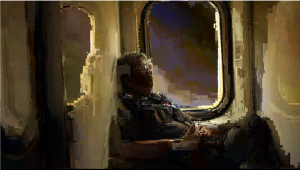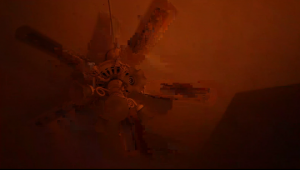Like the human eyes, the graphics of this artwork shows a visual harmony involving many shapes. I admire this project because building this system must have required a very technical calculation of each and every one of the pieces. Although, as a whole, it seems like a circular illusion, each shape is in certain and very specific positions to create a functioning system.
Memo Akten is an artist who mainly uses computation as his media to create projects that explore the collision between nature, science, and technology. This project, “Reducible Complexity” was designed in 2013 by Akin. He created this project to represent a visual form of reducible complexity derived from the natural world. Reducible complexity is a system that is composed of single interactive parts that are needed for a whole function. In other words, without one single element, the system will not be able to function or display. A natural and visual example of this is the human’s eyes. The mechanisms of eyes are systems that have fundamentally evolved with small incremental changes since humans naturally need both pairs for a full function.
![[OLD FALL 2018] 15-104 • Introduction to Computing for Creative Practice](https://courses.ideate.cmu.edu/15-104/f2018/wp-content/uploads/2020/08/stop-banner.png)




